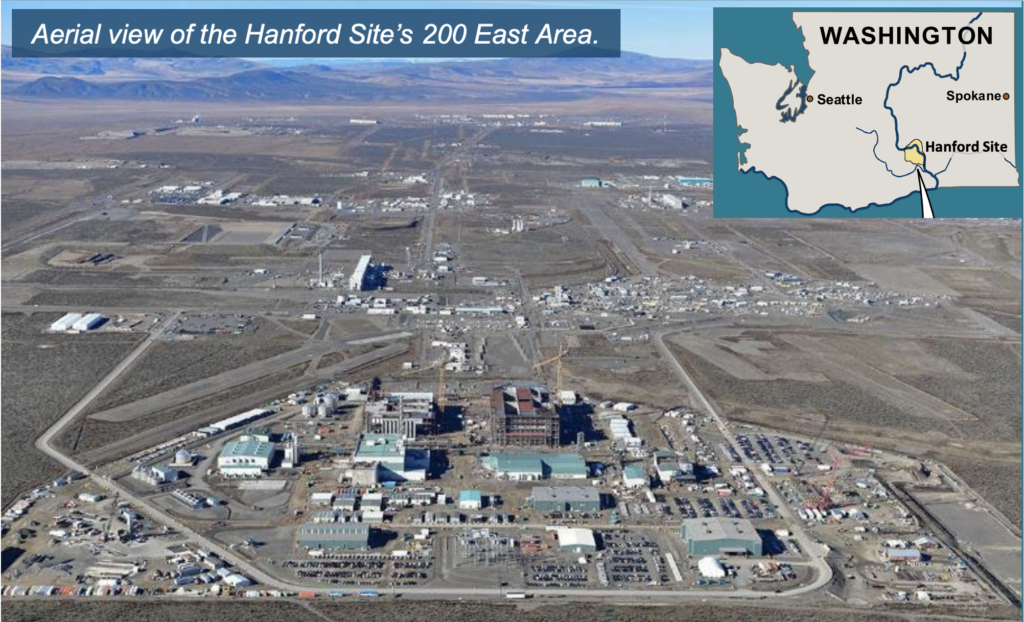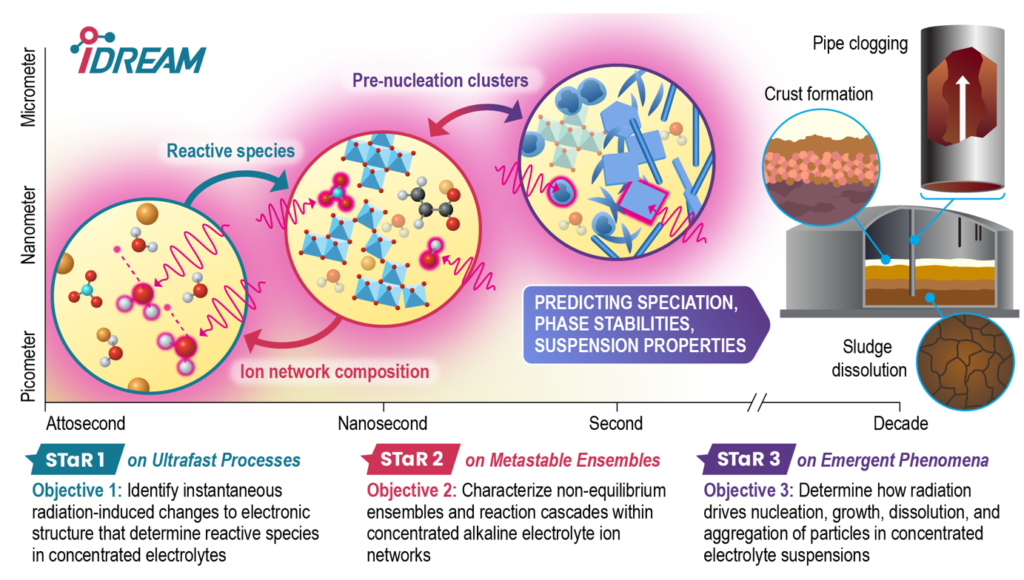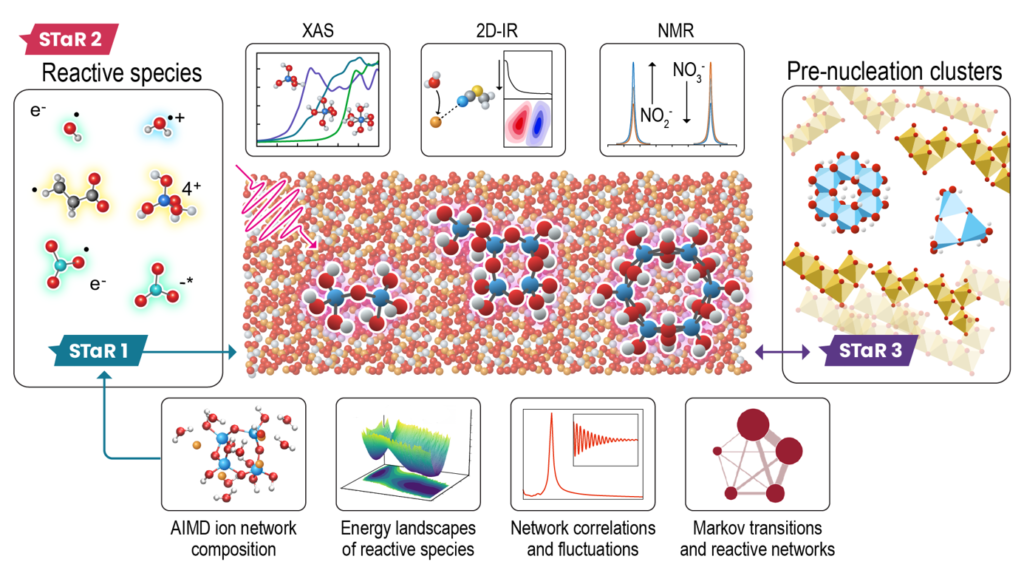
History of Hanford Nuclear Waste Site
Hanford Site produced plutonium for nuclear weapons through World War II and the Cold War. Production of Pu and the purification process that followed were wasteful endeavors. The created waste from the separation processes (namely BiPO4, REDOX, and PUREX) was collected in underground waste tanks that reached up to 4 million liters in capacity.
Since the end of Pu production, there has been an immense effort to clean up these wastes. The viscous and non-Newtonian nature of this highly radioactive waste poses challenges to transferring the waste out of the tanks for further treatment. Our group has been a part of these efforts for the past 8 years, providing insights on what might be going on in these tanks on the micro-scale.
Photo: Hanford Site in south-central Washington State
Ion Dynamics in Radioactive Environments and Materials (IDREAM)
Our scientific mission is to master the cascade of the radiation chemistry that drives far from equilibrium speciation and reactivity in chemically complex environments, linking attosecond timescales to decadal processes.
By achieving its scientific mission, IDREAM will provide the technical basis to predict and control speciation and reactivity—this can be leveraged by the Department of Energy (DOE) to support operational decisions for improved efficiency in retrieval, transport, and treatment of millions of gallons of legacy highly radioactive waste. IDREAM is uniquely positioned to achieve this mission with its effective team, novel experimental and computational capabilities, and track record of major accomplishments.


Metastable Ensembles
Concentrated electrolytes have distributions of nanoscale ensembles derived from molecular-scale building blocks that are defined by anion coordination to local cations; these ensembles self-assemble into aggregates and larger networks via ion-mediated interactions. Necessarily, there exist coupled timescales of molecular-scale rotation, aggregate tumbling, and longer time network reorganization. Reaction cascades initiated by ionizing radiation are influenced by local chemical composition and the multiple timescale dynamics that bring together reactants through and along the network of intermolecular interactions. Radiation-induced reactivity through the ion network is mediated by the nanoscale chemical, structural, and dynamical heterogeneity, and is not yet understood.
